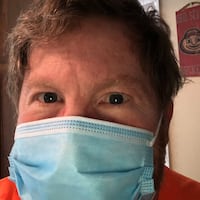Residents also can vote there on which streets they most want to see paved.
The levy costs the owner of a $100,000 home $136.50 per year, or the owner of a $75,000 home $102.38.
Here are the streets planned for 2022, funded at least partly through the levy:
- Elmont, between Hunt and Western;
- Monument, from Hurm to Neilan;
- Hurm (all of it);
- Stephens (entire street);
- Highland, from Armo to Eaton;
- Rhea, from Edgewood to Eaton;
- North Edgewood, from Park to Rhea;
- Fairborn, from Timberhill to Thoreau;
- Fairborn Court (all of it);
- Kensington, from the Southern cul-de-sac to Fairborn;
- Heathrow (all of it);
- Heathrow Court, from one cul-de-sac to another;
- Sunnybrook (all of it);
- Leo;
- Sanders, from Eaton to east of Herman;
- Kelly Court;
- Carol Court;
- Hermay, from Sanders to Mark;
- Corwin Avenue, from Freeman to Van Hook;
- Corwin Avenue, from River Road to Morris;
- Hayes, from Pleasant to Benninghofen;
- Tylersville Rpad, from city limits to Gateway Avenue;
- Diana Drive;
- Greer Court;
- Alberta Drive, from Wasserman to Gorham;
- Cameron Place;
- Victor Court;
- Gray Avenue, from Eaton to North E Street;
- North F Street from Gray to Webster; and
- North E Street from Gray to Webster.
In some cases, the streets being repaired are not completely financed by levy funds. One example is Tylersville Road, said Hamilton Director of Neighborhoods Brandon Saurber.
“That project is so much bigger than what that neighborhood gets from street-levy funds, so they will get their match from street-levy funds and then using other streets funds, we’ll supplement the remainder of that project,” Saurber said.
Plans for 2023 repairs
Here are the first streets the city has announced it plans to pave in 2023, some of which are continuations of roadways to be paved this year, some related to water-main work that will be performed this year:
- Glenway Drive;
- Kensington Drive, from Fairborn to the cul-de-sac;
- Fairborn from Thoreau to Glenway;
- West Fairway Drive from New London Road to Glenway Drive; and
- Fairway Court.
Some not-bad streets also paved
Crews this year also resurfaced, on a trial basis, some streets that weren’t in bad shape, with a new treatment the city is using called “cape sealing,” which is intended to help roadways last longer and costs less than a complete repaving.
Those streets were Joshua; Jeremy; Calan; Tabor; Thalland Cleveland, from Shultz to Tabor. Officials plan to evaluate them this year to get an early idea of how the treatments worked.
“You cannot wait until streets fail to improve them,” Saurber said.
“We can’t do ‘worst-first’ and catch up,” Saurber said, referring to roadways in absolute worst condition, “because those projects are the most expensive. So you have to do this blend of maintenance and complete reconstruction (of the worst streets) in order for us to catch up, because it becomes exponentially more expensive when these projects are allowed to get to that bad phase.”
A significant factor in deciding which streets are paved is the cost of replacing underground utilities beneath them. Smith told council last year he wanted to avoid performing work on some streets that require storm-sewer repairs beneath them. If the city were to push ahead with such projects immediately, that would prompt the need to raise rates for the city’s storm-sewer utility, something Smith said he wanted to avoid.
In an important note to residents, Saurber said street work near the under-construction Spooky Nook Sports Champion Mill indoor sports complex and convention center are not being financed by the street levy.
“We have not paved any streets around the Nook with street-levy dollars,” Saurber said.
Eventually, the city’s streets-levy website will show exactly how much money from the levy was spent in each neighborhood, compared to the percentage of streets located within each neighborhood. It’s difficult to estimate the costs before the projects are bid out and the work is performed, Saurber said.
About the Author
